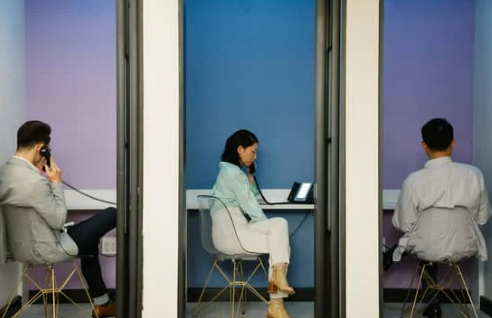Privacy holds great significance within American culture. The concept of “mine” is typically one of the earliest words a child learns, introducing notions of possession and ownership. Although children eventually grasp the concept of sharing, the natural desire to keep ownership and have the autonomy to decide whether to share persists.
In the U.S. and similar direct/private cultures, individuals are generally expected to seek permission before borrowing something belonging to another person. On the other hand, indirect/inclusive cultures perceive this matter from a distinct standpoint.
In an inclusive culture, possessions are shared openly among everyone. This implies that items like food, tools, and even clothing are freely exchanged regardless of individual ownership. In such a culture, the focus shifts from “I have” to “We have.”
This perspective extends to the concept of time as well. Direct cultures tend to value and guard their time, expressing sentiments such as “this time is mine.” On the other hand, indirect cultures have a limited concept of solitude and prefer to spend their free time with others.
The varying perspectives on privacy across cultures can often lead to significant misunderstandings when traveling internationally. In her book Foreign to Familiar, Sarah Lanier goes into the differences between cultures, categorizing them primarily as either direct or indirect. If you missed out on our series thus far, you might want to start at post 1 for the basics! 😉
When it comes to privacy and inclusion, direct cultures generally align with privacy-focused cultures, while indirect cultures tend to embrace inclusion-oriented cultures. Gaining knowledge about these cultural distinctions and recognizing how perspectives on privacy can vary from one culture to another can be super beneficial when hosting international guests or traveling abroad; it also allows for smoother communication and helps prevent misunderstandings that could potentially strain relationships.
Privacy vs Inclusion 🔐
Throughout her journeys, Sarah came to realize that the most significant adjustment she had to make when visiting indirect cultures was surrendering her personal privacy and solitary time. Initially, Sarah found herself weary in such cultures due to the unpredictability of interruptions. However, as she acclimated to the environment, she started grasping the significance that indirect cultures attributed to inclusion and began to appreciate it.
Here’s an excerpt from her book Foreign to Familiar on this topic:
When I lived in Amsterdam, a common topic of discussion among colleagues was the loneliness of the city. I spent years trying to brainstorm with others on what to do about our feelings of isolation and lack of relationship.
Then I lived in Chile for nine months. At the end of that time, I realized I’d never met a lonely person. It was almost impossible to be lonely. People were always dropping in, settling into your kitchen while you cooked, and chatting away. If you wanted to be with people, you just walked out your door and started visiting. If you didn’t, you had to hide.
Downfalls of Structured Privacy 😥
When individuals from indirect cultures visit direct cultures, they may often experience a profound sense of loneliness due to the privacy and reservation commonly observed in direct cultures. Sarah herself experienced this phenomenon upon returning to the U.S. after spending nine months in Chile, immersed in an indirect culture.
The reintegration into a direct culture reignited her feelings of isolation. One Sunday afternoon, Sarah decided to prepare a plentiful meal and eagerly invited her friends to join her for dinner. However, one by one, they all declined, offering various excuses primarily rooted in their need for privacy and preference for prearranged plans.
It was during this moment that Sarah had a significant realization regarding one of the primary causes of loneliness in the well-organized city of Amsterdam. She recognized the need for a little more spontaneity and nurturing of relationships similar to an indirect culture, alongside a bit less structured privacy typically observed in direct cultures.
Feeling the weight of her loneliness, Sarah decided to visit a restaurant simply to be in the company of others. As she sat in her booth, she overheard conversations in Spanish. Longing for the inclusive culture she had experienced in Chile, Sarah assumed that most Spanish-speaking individuals would come from an inclusion-oriented culture.
With a glimmer of hope, she approached them, greeting them warmly and sharing her recent return from Chile, expressing her yearning for the sound of Spanish. As expected, the mother graciously shifted over and patted the seat beside her, welcoming Sarah into their circle.
Sarah nestled comfortably into their booth, instantly feeling like a cherished family member. The Mexican family shared with her their excitement about their long-awaited vacation in the U.S., a trip they had eagerly anticipated for years.
Yet, Sarah was taken aback when they revealed that she was the first American who had extended a warm welcome to them since their arrival. The family expressed surprise at the perceived privacy-oriented nature of Americans; they weren’t complaining, but rather, were overjoyed to have an American engage with them in the same welcoming manner they would typically extend to visitors in their own country.
Permission to Interrupt vs Automatic Inclusion 🤗
In cultures like the U.S., privacy is highly valued. Interrupting a conversation or inviting oneself to a meal without permission is considered extremely rude. People in these cultures believe they are entitled to privacy, whether it’s during a conversation, a meal, or when they simply want some quiet time alone. In such cultures, it’s assumed that others also value their privacy, so any intrusion is usually preceded by phrases like “Do you have a minute?” or “Is this a good time to ask you a question?” This approach allows individuals from privacy-oriented cultures to demonstrate respect for others and their need for privacy.
In indirect cultures, automatic inclusion is a significant distinction from direct cultures. This means that in an indirect culture, everyone present is automatically included in whatever is happening. Even if a friend walks up in the middle of a conversation without knowing its topic, they would be automatically included in an inclusion-oriented culture. The assumption is that the conversation is not private, and a friend would feel comfortable joining in. This inclusiveness applies to meals, sports activities, watching shows, and nearly anything else. Sarah, for example, shares her experience:
“In Chile or Egypt, and other [indirect] cultures, I can assume I can join in with whatever is going on in my presence, in plans being made, and in food being shared.
I was invited to the home of an American friend for dinner in Chile. It had been over a year since we had seen each other, and our plan was to catch up on news of mutual friends and share photos. I, for one, was expecting an evening of private conversation.
While we were still eating, a knock came on the door, it opened, and a man came in. He pulled up a chair and joined us. We forgot our previous conversation and talked with this man about local news. Then another knock on the door announced yet another visitor, and this visitor too joined us and the subject of conversation was once again changed. The two visitors stayed until midnight, and we thoroughly enjoyed their company. Our own plans were forgotten.
What seemed strange for me was the fact that my American friend thought nothing of this intrusion. He had lived in Chile so long that he no longer considered our visit a private one. It had become, for him, an inclusive event.
In indirect cultures, there’s minimal differentiation between those who are part of an event and those who are not, particularly on a social level. When individuals from an inclusion-oriented culture visit a culture that values privacy, they’re often surprised to discover that automatic inclusion isn’t the norm. For someone accustomed to an inclusive culture, privacy may appear “exclusive,” and it can be challenging for them to comprehend a more private nature.
Okidokie, this post is getting long, so let’s stop before your brain is overloaded! Until next time on ✨PART 2✨ of understanding our space within direct and indirect cultures! 😘
Before you leave, Chameleon here with a question: Are you culturally more private or inclusive? Were there moments you clashed with the opposite culture?
Share with us in the comments below!




